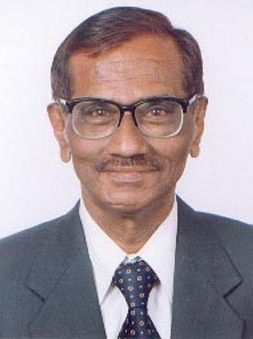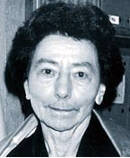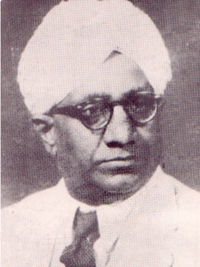The knowledge of Jainism is naturally based on the works of the great master of the canon of the Canon. Those of the Digambaras have been known relatively lately in Europe, where their study has advanced on the whole rather little. The tradition of the Svetambaras, which has been sooner available, is in some manner recapitulated in their canon, and made explicit in the related commentaries. The Digambaras, one recalls, deny the authenticity of the greater part of the canonic bulk and trust the authority of the ‘fathers of the Church.’ But teachings on both sides often confirm one another, which proves that they date back to a common epoch, of course anterior to the secession of A.D. 9 (and a fortiori to the Council of Valabhi), and that they have been on an average remarkably transmitted and preserved. Thus, if one will take a general view of the essential points of the doctrine and the practice, it is legitimate to trust the Svetambaras canon. Yet, in certain chapters where the canonic teachings remain in embryo, it can be completed by the indications which furnish two systematic expositions, the Pravacanasara, (Essence of the Doctrine), composed on 275 Prakrit stanzas, work of Kundakunda (Digambara, traditionally placed in the first century A.D.); the Tattvarthadhigamasutra (Sutras of the Access to the Meaning of the Principles), written in Sanskrit in the Sutra style (about 350 sutras or ‘aphorisms’), as a reply to the fundamental texts of the diverse Brahmanic philosophical systems: its author is Umasvati; the work is an authority in both the sects. The scholars have emphasized the practical orientation of these two dogmatic epitomes, which are preoccupied with instructing and the same time, with guiding the faithful towards the Liberation.
As far as the laity is concerned, the canon gives only a few instructions. They have served as a point of departure for the writing of the numerous savants of the medieval age: they reveal a certain evolution of the practices.
The Svetambara Canon is called agama or siddhanata, or even ganipidaka ‘basket of the masters,’ which according to a traditional epithet, is composed of twelve angas or ‘members’; but the twelfth is illusory,
One has seen in what circumstances the canon was compiled in the second half of the fifth century A.D., and how, as early as the fourth and third centuries B.C., the first Council, assembled at Pataliputra, had tried to check the loss of the sacred texts. Bhadrabahu was the last to recount them, Sthulabhadra to know them in entirety. With him disappeared the ancient books known as ‘purvas’ as well as the Drstivada, the ‘twelfth’ anga, which is said to have incorporated the purvas. Indeed, they could well have been abandoned when their text (which apparently incorporated the ancient controversies) was judged to be useless or even dangerous.
The Canon is composed of four principal sections: it is probable that, at first, it was arranged according to the decreasing order of the number of treatises which constitute them, and that their sequence was broken, later, by the insertion, in the third place, of minor texts of doubtful antiquity, the Prakirnakas, or ‘miscellanea’ and, at the fifth, of two propaedeutic works.
The first section is that of eleven angas, or principal ‘members’, the second that of upangas which, because they follow the angas, are supposed to be corresponding to them. This correspondence does not really exist, for even though it is treated of dogmatics, monastic prescriptions and moral considerations are formulated, and diverse legends are recounted in both the groups. The nucleus of the Prakirnakas concerns the discipline, and consequently, its subjects is connected with that of the six Chedasutras, or ‘sutras to be studied in case of cancellation’ of religious antiquity, which are the most ancient codes of discipline. Then came the two epistemological epitomes as pointed out earlier. Finally, the four mulasutras or ‘basic sutras’ (according to the general interpretation) certain of which are just like anthologies of the religious life. On the whole, therefore, these are forty-five treatises (of which Sthanakvasis retain only thirty-two), to which are added a few ‘exterior members.’
But the unity of these sections, rather, the unity of the sutras considered individually, is artificial. They are, in fact, constituted by mosaics of texts; this is proved, among others, by formal irrefutable indices, such as the metrics and the language. The language is Prakrit (middle Indo-Aryan), with certain dialectical motley, which is hardly masked by the usual monotony of the often formular style. This cannot be said to be the language of Mahavira; only certain traditional grammatical forms, diverse vocables, old turns and clichés, originate from Magadha.
Fundamentally, the idiom is western, and it is clear that this character is all the more evident when the piece is more recent. Two varieties of Prakrit sometimes coexist, sometimes dominate: the Ardha-magadhi (semi-magadhi), in which are edited the oldest sections, the Jain Maharastri which gains little by little till it becomes totally overwhelming in the latest sutras. This mixture and this linguistic evolution reflects displacement towards the West of the Community-the migration from Pataliputra towards Valabhi.
The fact that a particular text belongs to the Canon is no guarantee of age or origin: it was been established that, in some cases, canonical passages contradict certain data, the authenticity of which is established from other sources. But the high antiquity of the oldest Canonic passages is incontestable. A recent study, based on metrical criteria, has shown that they were probably anterior to the fourth and third centuries B.C. (the oldest dates which had been admitted up till these last years) more than one passage could reflect the direct echo of the words of Mahavira.
Thus, one understands the necessity and difficulty of establishing the critical edition of these treatises. This is a considerable enterprise (already partly undertaken). It will permit to correctly utilize and understand the enormous documentation which is included in these composite texts, often difficult, but rich in information on the Jain world and the ancient Indian civilization.
A gigantic scholastic effort which the Jain savant have pursued during centuries, has contributed onwards preserving the tradition which, on the whole, and despite some defects, can be deemed to be faithfully. But the meaning many passages escapes us in absence of indigenous commentaries. The most ancient that we know of are the niryuktis, ‘analyses’, versified aide-memoire (in Prakrit), which record the scheme of oral explication in prose. Traditionally attributed to Bhadrabahu, they more probably date back to the first century A.D. There are also ‘commentaries’ (Bhasya), sometimes very long, likewise composed in Prakrit verses. In their turn, they have been commented upon in the curnis (towards the seventh century A.D.) ‘which pulverize’ and ‘which break,’ in Prakrit prose, the matter of the oral commentaries which always have nourished the scholastic instruction. From the ninth to the tenth century A.D. the Bhasya give place besides to the great commentaries in Sanskrit prose, the tikas, etc. The genre was inaugurated in the eighth century by Haribhadra; it marked a turning in the linguistic usage of the Svetambaras who henceforth will have more and more recourse to Sanskrit. The ulterior commentaries do not furnish interesting instruction.
 Bal Patil
Bal Patil
 Prof Dr. Colette Caillat
Prof Dr. Colette Caillat
 Prof. Dr. Adinath Neminath Upadhye
Prof. Dr. Adinath Neminath Upadhye
